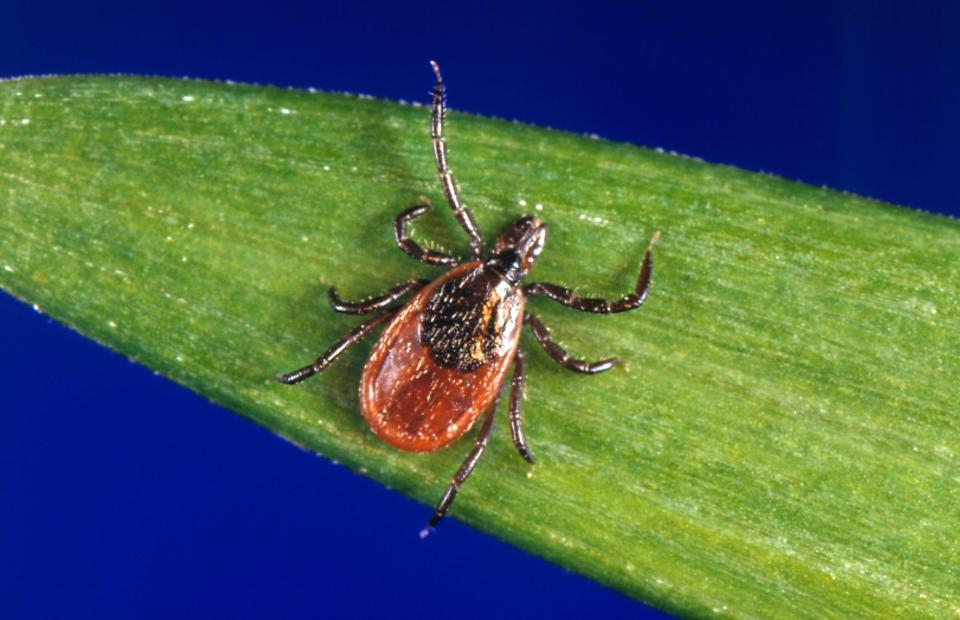It's tick season. Here's how to prevent bites and tick-borne diseases.
The weather is warming for much of the United States, which means it's time to watch out for ticks.
Tick season is usually from from April to October, though it varies by region. Across the U.S., there are almost 100 varieties of ticks, but only a few bite humans. Those that do bite can transmit bacteria, viruses and parasites that cause diseases in humans.

Lyme disease is one of the most common tick-borne illnesses, which if left untreated can spread to the heart, joints and the nervous system.
So before you go outdoors – whether you're hiking, walking the dog or just hanging out in your backyard – here's what you need to know to keep you and your family safe this summer.
Closer look: What you need to know about Babesiosis, a tick-borne illness with cases on the rise
What are ticks and where are they found?
Ticks are not insects. They’re parasitic arachnids about the size of a poppy seed that feed off the blood of mammals, birds and reptiles.
Ticks can typically be found in grassy, brushy or wooded areas, or on animals. They typically wait on the tips of branches, leaves or tall grasses for prey to walk by. The good news is they can’t fly or jump on you.
How can I prevent tick bites?
When walking in grassy, wooded areas, make sure to:
Wear light-colored clothing to help spot them easily
Tuck pants into socks, and tuck shirts into pants
Walk in the center of trails and avoid areas with high grass
Treat clothes with insect repellents or products containing 0.5% permethrin, a common insecticide, the CDC says

Tick’s saliva has anesthetic properties, so you may not even realize you’ve been bitten. Once you're indoors, you should:
Shower within two hours
Tumble dry clothes on high heat for 10 minutes
Check yourself, your kids and your pets for ticks regularly especially around the knees, behind the ears, groin, armpits and hairline
What can kill ticks instantly?
Permethrin is an insecticide that kills ticks on contact, according to the CDC, which recommends treating clothing and gear with products that contain 0.5% permethrin. One application on shoes, socks and pants will remain protective through several washings. Permethrin should not be used on skin.
What to do if you find a tick on you
Use fine-tipped tweezers to grasp it by the head as close to the skin as possible
Gently pull the tick upward, making sure not to twist or squeeze it
Wash and disinfect the area with rubbing alcohol or soap and water
If you're uncomfortable removing the tick yourself, seek medical attention. And remember, there are a lot of folk remedies for tick bites — petroleum jelly, nail polish and a burning match — but they can be dangerous. Burning a tick off can even increase your chances of getting a tickborne illness.
The CDC recommends disposing of a live tick by putting it in alcohol, placing it in a sealed bag/container, wrapping it tightly in tape, or flushing it down the toilet.
How harmful are ticks to humans?
One of the most common is Lyme disease, which can severely impact the joints, heart and nervous system. There are more than 35,000 cases of Lyme disease reported nationally but the total number, the CDC suggests, is closer to 476,000. It's most commonly reported in the upper Midwest, Northeast and mid-Atlantic.
Although Lyme disease is the most common tickborne illness, ticks can pass on more than 14 diseases to humans including:
Anaplasmosis
Borrelia mayonii
Borrelia miyamotoi
Bourbon virus
Colorado tick fever
Ehrlichiosis
Heartland virus
Lyme disease
Powassan disease
Rickettsia parkeri rickettsiosis
Rocky Mountain spotted fever (RMSF)
STARI (Southern tick-associated rash illness)
Tickborne relapsing fever (TBRF)
Tularemia
364D rickettsiosis
Tick bite symptoms
Many tickborne diseases can have similar signs and symptoms including:
rash
fever
chills
aches and pains
headache
fatigue
muscle aches
Keep an eye out for the bull's-eye rash. It typically starts at the site of a tick bite and gradually expands outward, up to a foot or more.
Tickborne diseases can often be difficult for physicians to diagnose, so see your doctor immediately if you have been bitten by a tick and experience any of these symptoms.
Symptoms of Lyme disease
Symptoms include fever, fatigue, joint pain and skin rash. These symptoms can be mild or progress to severe infections that require hospitalization.
Is there a vaccine to protect against tickborne illnesses?
While there are Lyme disease vaccines for dogs, there hasn't been a vaccine for humans since one was pulled from the market in 2002 due to people reporting symptoms similar to Lyme disease.
However, that may soon change. Pfizer is working with French biotech Valneva on a vaccine candidate that's in late-stage clinical trials. Meanwhile, Moderna is developing two mRNA vaccines.
Josh Hafner and Rachel Aretakis contributed reporting. Follow N'dea Yancey-Bragg on Twitter @NdeaYanceyBragg
This article originally appeared on USA TODAY: Tick season 2023: How to prevent tick bites, Lyme disease, Powassan

